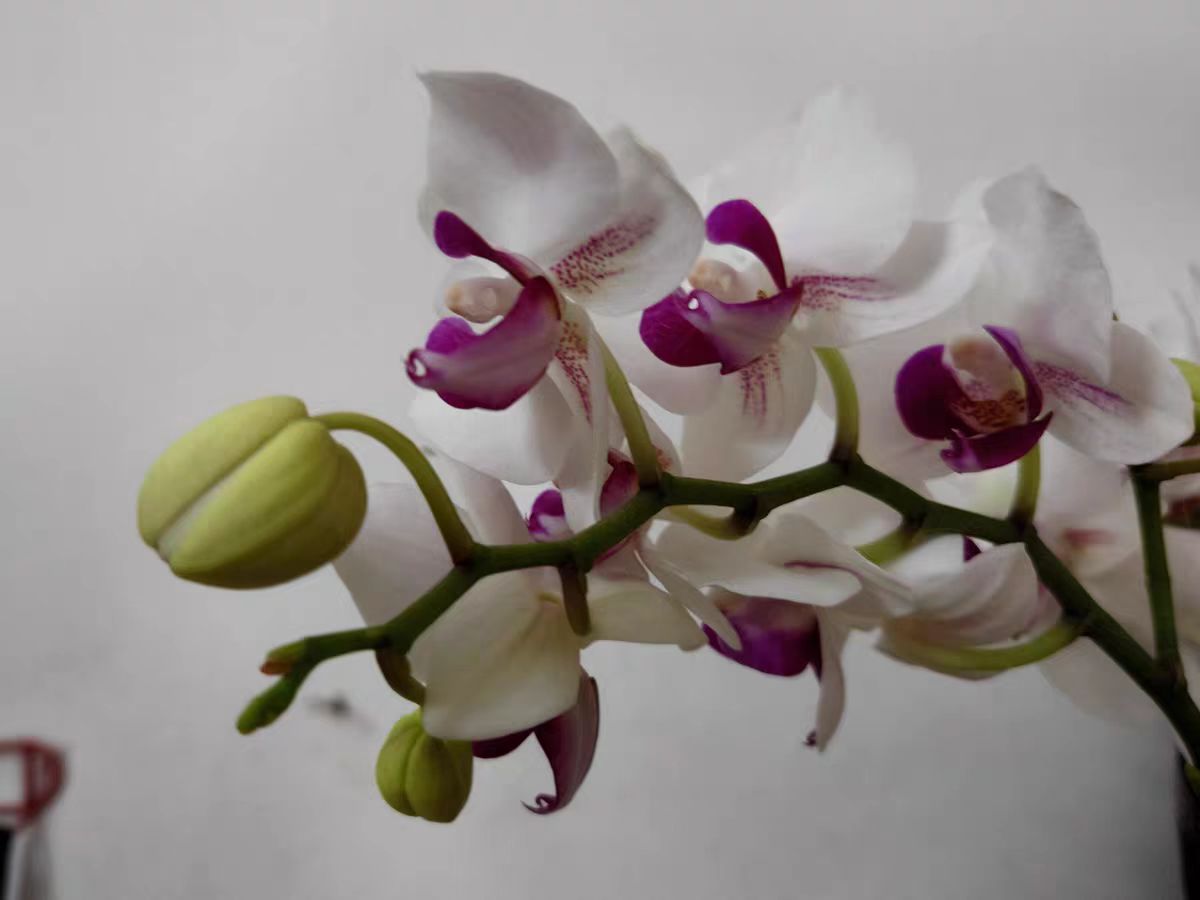People often ask: When their Phalaenopsis suddenly sprouts multiple flower spikes, is that a good or bad thing? Does more flower spikes mean more spectacular blooming? Many believe that "the more flower spikes, the better" as a symbol of profuse blooming, but the reality is more complex—spike quantity requires comprehensive consideration.
While multiple spikes can create a "flower waterfall" effect (perfect for Chinese New Year displays), novice growers often face problems with excessive spikes. Why? Let's start with Phalaenopsis growth habits: Each flower spike consumes massive nutrients. If a plant suddenly produces 3–4 spikes, though exciting at first, consider the source of these nutrients. Remember: Phalaenopsis roots don’t grow in soil—they rely on aerial roots for water and nutrients. Sustaining too many spikes can "exhaust" the plant. Newbies take note: If your Phalaenopsis is newly purchased or recently repotted, trim extra spikes, keeping only 1–2 to focus energy on blooming.
But are multiple spikes always bad? Not at all! If your 2–3-year-old Phalaenopsis has thick white roots crawling out of the pot and sturdy, glossy leaves, abundant spikes signal excellent health.
Here’s a tip to judge if your plant can handle multiple spikes: Touch the leaves. If they’re thin and limp like wilted lettuce, trim some spikes even if they’ve emerged. If leaves are firm and rebound when pressed, feel free to keep them. When spikes are numerous, feed weekly with diluted orchid fertilizer or place slow-release pellets around the pot’s edge to ensure enough nutrients for large blooms.
More flower spikes aren’t inherently bad—provided the plant is robust. Novices should prioritize basic care: Let the Phalaenopsis adapt to its environment and develop strong roots before aiming for "multiple spikes." Gardening is like pet-raising—adjust care based on the plant’s condition, not just pursue quantity. Next time your Phalaenopsis goes spike-happy, you’ll know what to do!
Is it better for Phalaenopsis to have more flower spikes?

Share with
Tagged in :




Leave a Reply